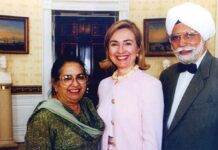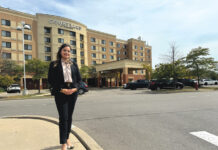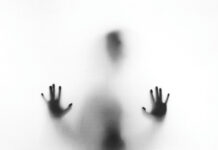The massacre of four students protesting against the Vietnam war by US National Guard on the campus of Kent State University in Ohio on May 4, 1970, changed America forever

We students were enjoying a nice sunny spring on the campus of Cornell University in Ithaca, New York, during April 1970. Everywhere students were out enjoying the sun, swimming in the gorges, talking about the 1968 My Lai massacre and discussing US Vice-President Spiro Agnew’s famous line about campuses being filled with effete snobs and the pathetic Vietnam War. And, oh yes, there were a few studying too!
Protest songs against the ghastly ‘Nam war,’ as it was popularly known, were being played all over. Songs by Phil Ochs, Country Joe and the Fish (‘be the first one on your block to have your boy come back home in a box…’), Jefferson Airplane, Steppenwolf, Jimi Hendrix and more.
Many US citizens were fleeing north to Canada to escape the dreaded draft (compulsory military conscription) so as to avoid going to Vietnam to fight and die for no reason (‘and it’s one, two, three, four, what are we fighting for, don’t ask me I don’t give a damn, next stop is Vietnam…’). Many even thought the war would soon wind down and the troops would come back home.
But then on the last day of April, thunder struck! US Ppresident Richard Nixon, popularly known as ‘Tricky Dick,’ declared that the US had invaded Cambodia and that more than 100,000 troops would be drafted and deployed. The war just escalated (‘plenty of good money to be made by supplying the army with tools of its trade…’)!
What ensued was totally unprecedented. NBC, ABC and other channels were filled with news of clashes between student anti-war protesters and the police on such elite campuses as Princeton, Stanford, Berkeley and Yale.
However unbeknownst to many, down at an innocuous university in Akron, Ohio, called Kent State, student protesters had several clashes with the police and had set fire to the Reserve Officers Training Corps (ROTC) building. The nervous mayor of Akron, who was convinced that this was the work of communist activists rather than just regular students protesting an unjust war, called in the National Guard (NG).

And that caused the event that would go down in history that finally galvanized the straight and orthodox parents and elderly to denounce the Vietnam war and lend support to the students. On May 4, 1970, around noon, Ohio’s National Guards (NG) ordered the demonstrating Kent State students to disperse and when they refused, the NG in their typical drilled response opened fire, killing four students and wounding nine. John Filo’s, a student journalist, photo of a girl, Mary Ann Vecchio, crying in despair over the body of a slain student, made it to the cover of Newsweek and around the around.

That was it! Demonstrations and strikes started all over the country. Many campuses called off classes, including Cornell University in protest agains this atrocity. Students went all over town and asked parents and grandparents to sign petitions to send to the government to tell them to call off the war and end the draft.
President Nixon’s response to the killings was very callous. He did not at all empathize with the students or their parents. He continued with his war-mongering because he claimed it was necessary to keep the US safe from Communism. Many universities gave the option to students to stop their studies and go out to protest and continue their studies later. Some professors even refused to hold classes in solidarity. A peaceful April turned into an ugly May as even more clashes took place between students and police. On many campuses, a new grade was formed, one that read ‘I’ for incomplete, meaning the student had not completed his/her course and could continue at a later date.
Soon after, the famous band, Crosby Stills Nash and Young, composed a song called Ohio in memory of that sad day. It became a national anti-war and counter-culture anthem.
Fifty years later, it would seem no lesson has been learned, as wars continue, no matter who the perpetrators are.
The late Jimi Hendrix, recognized by the majority as the most accomplished and avant-garde guitarists of all time, once said,“When the power of love overcomes the love of power, that’s when we will have peace!”
Hendrix is no more but I am sure we all wonder when that day will come to pass.
(Lachman Balani is a mortgage expert based in Mississauga)
READ NEXT: How Elvis the Pelvis sent women screaming for love in 1972








